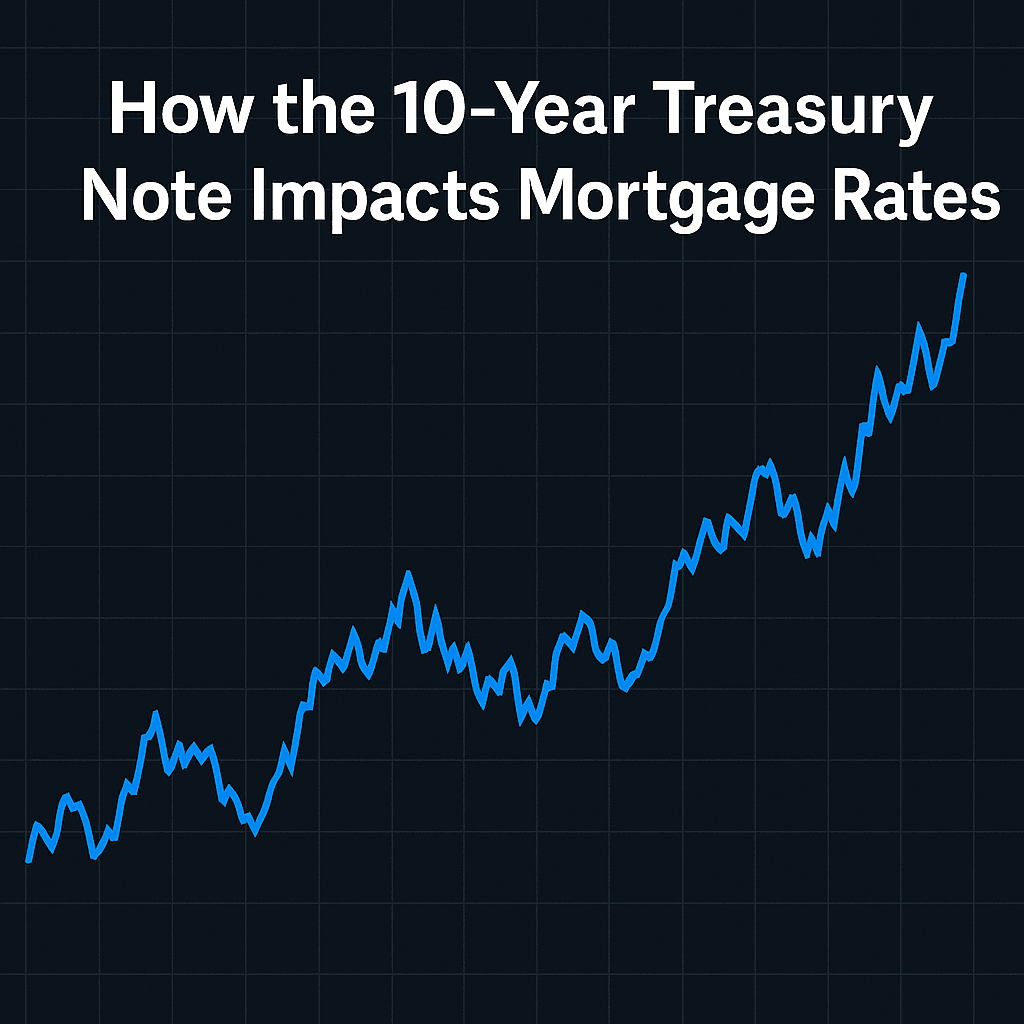Why Mortgage Rates Follow the 10-Year Treasury – Not the Federal Reserve
Why Mortgage Rates Follow the 10-Year Treasury – Not the Federal Reserve One of the biggest misconceptions in real estate and lending is that mortgage rates automatically move with the Federal Reserve’s decisions. Every time the Fed announces a rate cut (or hike), news headlines stir excitement, and homeowners or buyers think, “Great! Mortgage rates are coming down too.”
But here’s the truth: mortgage rates are not directly tied to the Federal Reserve’s federal funds rate. Instead, they closely track the performance of the 10-year U.S. Treasury note. Let’s break it down.

The Federal Funds Rate – What It Really Impacts
The federal funds rate is the overnight rate banks charge each other to borrow money. When the Fed raises or lowers this rate, it’s aimed at controlling short-term borrowing and lending across the economy.
This rate influences:
Credit card APRs
Auto loans
Personal loans
Home equity lines of credit (HELOCs)
Savings account and CD yields
Notice what’s missing from this list? 30-year fixed mortgage rates. That’s because mortgages are long-term debt, not short-term. The Fed’s moves certainly influence the economy overall, but they do not set mortgage rates.
Why the 10-Year Treasury Matters
When investors buy or sell U.S. Treasury bonds, they are essentially setting a “risk-free” benchmark for long-term borrowing. The 10-year Treasury yield is the most closely watched because its maturity length mirrors how investors view long-term stability and inflation trends.
Mortgage lenders look to the 10-year yield when setting rates because:
Mortgage-backed securities compete with Treasuries for investor attention.
Investors demand a “spread” or cushion above Treasuries since mortgages carry more risk than government bonds.
Historically, 30-year fixed mortgage rates run about 1.5% to 2% higher than the 10-year Treasury yield.
So if the 10-year Treasury falls, mortgage rates usually follow. If it rises, mortgage rates climb.
Why the Disconnect Confuses Homebuyers
Let’s say the Federal Reserve announces a half-point cut in the federal funds rate. If the 10-year Treasury doesn’t move lower, mortgage rates might not budge at all—or they could even rise.
On the other hand, if economic uncertainty drives investors into the safety of Treasuries, pushing yields down, mortgage rates can drop even without the Fed cutting rates.
That’s why you sometimes see mortgage rates fall before the Fed makes any announcements, or even move opposite of what the Fed is doing.
What Buyers and Homeowners Should Watch
Instead of hanging hopes on Fed press releases, keep an eye on:
The 10-Year Treasury Yield – Follow its daily and weekly trend.
Inflation Reports – Lower inflation often leads to lower Treasury yields.
Investor Demand for Bonds – Global events, recessions, or stock market downturns usually drive money into Treasuries, lowering yields and mortgage rates.
The Bottom Line
The Federal Reserve’s decisions affect the economy in many ways, but they are not the key driver of mortgage rates. For anyone considering buying a home or refinancing, it’s smarter to track the 10-year Treasury.
If you see that yield trending down, there’s a strong chance mortgage rates are softening too. That’s your real signal—not the Fed’s latest announcement.
✅ Tip for Buyers & Homeowners: Don’t just wait on headlines about rate cuts. Pay attention to the 10-year Treasury and connect with a mortgage professional who can interpret how market movements affect your specific loan scenario.